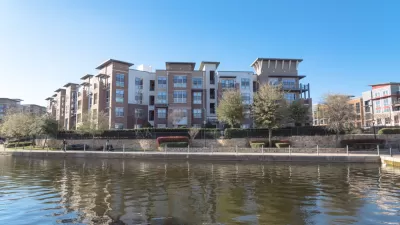The Pew Research Center digs into a question of definitions, fraught with exceptions and subjectivity.

Ruth Igielnik Wieder shares the results of a survey and analysis intended to determine more about the defining characteristics of urban, suburban, and rural communities in the United States.
As a new approach to the question of how to tell these types of communities apart, the team at the Pew Research Center took the additional step of surveying residents to compare public perception to outside sources of classification, two from the government and one based on ZIP codes. The government sources included 1) the National Center for Health Studies Urban-Rural Classification Scheme and 2) the U.S. Department of Agriculture Economic Research Service’s Rural-Urban Continuum County Classification. The ZIP Code measure included two factors: "the distance from the ZIP code to the center of the largest principal city in the nearest metro area (as measured by distance to the city hall) and the household density in the ZIP code."
According to Wilder, the comparisons between those three measures and the findings of the survey reveal a few patterns: "All three methods most accurately classified rural Americans and did less well with Americans in urban and suburban areas. And while all the measures performed relatively well overall, the decision tree most closely matched self-reports across all three community types."
As for which metric turned out to be the most useful, in the opinion of researchers: the self-reported assessment.
FULL STORY: Evaluating what makes a U.S. community urban, suburban or rural

Alabama: Trump Terminates Settlements for Black Communities Harmed By Raw Sewage
Trump deemed the landmark civil rights agreement “illegal DEI and environmental justice policy.”

Study: Maui’s Plan to Convert Vacation Rentals to Long-Term Housing Could Cause Nearly $1 Billion Economic Loss
The plan would reduce visitor accommodation by 25% resulting in 1,900 jobs lost.

Planetizen Federal Action Tracker
A weekly monitor of how Trump’s orders and actions are impacting planners and planning in America.

This Toronto Suburb Has More Bus Riders Than Columbus, Ohio
Brampton, Ontario used gradual improvements in service to prove that if you build it, they will ride.

Paris Bike Boom Leads to Steep Drop in Air Pollution
The French city’s air quality has improved dramatically in the past 20 years, coinciding with a growth in cycling.

Why Housing Costs More to Build in California Than in Texas
Hard costs like labor and materials combined with ‘soft’ costs such as permitting make building in the San Francisco Bay Area almost three times as costly as in Texas cities.
Urban Design for Planners 1: Software Tools
This six-course series explores essential urban design concepts using open source software and equips planners with the tools they need to participate fully in the urban design process.
Planning for Universal Design
Learn the tools for implementing Universal Design in planning regulations.
Smith Gee Studio
Alamo Area Metropolitan Planning Organization
City of Santa Clarita
Institute for Housing and Urban Development Studies (IHS)
City of Grandview
Harvard GSD Executive Education
Toledo-Lucas County Plan Commissions
Salt Lake City
NYU Wagner Graduate School of Public Service



























